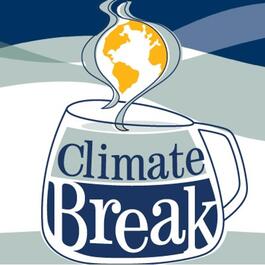
The Current State of US Energy Consumption The United States consumes vast amounts of energy and spends enormous amounts of money every year to fuel our economy, business, and lifestyle. The US accounts for 4% of the world’s population, yet uses 16% of the world’s total energy. The production and consumption of energy are major drivers of global climate change, hazardous air pollution, habitat destruction, and acid rain. In 2022, US consumers spent $1.7 trillion on energy, amounting to around 6.7% of GDP. Annual energy costs were $5,159 per person in 2022, a 30% increase from 2021. In order to mitigate the large-scale impacts of excessive energy consumption, policymakers are calling for an urgent restructuring of the energy system through increasing efficiency. Energy efficiency is the use of less energy to perform the same task or result, often being achieved through more efficient heating and cooling systems, manufacturing facilities, and appliances and electronics. Simply, energy efficiency reduces the amount of energy required to provide products and services. Many lower-income households are burdened by rising electricity costs and increasing risks from extreme weather events but do not have the resources to fund energy-efficient systems in their homes. To address this disparity, new energy efficiency standards for affordable housing are being developed in order to lower costs and improve climate resilience for households unable to afford high energy prices.Current Initiatives in the US The Biden Administration has taken a lead in issuing new minimum energy standards for homes built with federal dollars in an attempt to save costs for renters and homeowners. The US Department of Housing and Urban Development (HUD) and the USDA announced the adoption of the Minimum Energy Standards for new single and multi-family homes. The standards are expected to decrease cost expenditures for residents, reduce energy use and pollution, improve resident health, and increase resilience in extreme weather events. The adoption of such energy standards will incorporate cost-saving insulation, air sealing, and efficient windows, lighting, heating and cooling systems in HUD and USDA supported properties to decrease energy bills for families. It is projected that energy efficiency improvements of 37% will decrease energy costs by more than $950 a year for homeowners. Overall, minimum energy standards are projected to expand housing affordability, minimize health risks, and improve resilience of homes during extreme weather.Advantages of energy efficiency standards Energy efficiency can increase affordability and reliability for homeowners by reducing total energy demand and peak electricity demand. Peak electricity demand is the highest demand for electricity at any one point in time, which utilities are required to have the capacity to meet. Peak demand is driven by patterns of energy use in the market, with most production occurring in the afternoons. Energy efficiency programs utilize a demand-side management (DSM) strategy to reduce energy demand specifically during these high-volume, peak hours. For homeowners, energy efficiency improvements are cost-effective as they can lower utility bills by reducing the amount of power needed. Further, energy efficiency can decrease our reliance on fossil fuels and enable the growth of renewable energy, thereby decreasing GHG emissions. Updated minimum energy standards are expected to reduce 6.35 million metric tons in carbon emissions over the next three decades, generating an annual cost savings of $13.9 million. Energy efficiency also spurs the creation of new jobs in research, production, installation, and sales. In 2022, more than 2.1 million Americans worked in energy efficiency, with this only growing as we transition to a greener economy. There are many social, economic, and environmental advantages that come alongside transitioning towards an energy-efficient economy,Drawbacks in achieving energy efficiency Although there are many advantages to achieving energy efficiency, there exists roadblocks in achieving the current goals being set. First, innovative technologies rely upon very specialized knowledge, requiring expert research in the field. As well, a large concern in the development of these technologies are the significant upfront costs, through initially high levels of investment in research and development. For projects that are just starting up, it can be difficult to secure funding, potentially leading businesses to solely focus on short-term goals. On the consumer side, there may be a lack of acceptance or awareness of these new technologies prohibiting their take up in the market. To achieve universal acceptance, technologies must attain the energy savings and functionality that consumers expect. Scaling up these technologies can be time-consuming and labor-intensive, requiring complex supply chain logistics, techniques, and manufacturing. Government policies, such as the new energy efficiency standards for lower-income households, will be vital in encouraging innovation and investment to accelerate this transition.Who is our guest? Mark Kresowik, Senior Policy Director at the American Council for an Energy-Efficient Economy, is a strong advocate for centering marginalized communities in policies that work to improve energy efficiency. Mark works to shape local, state, utility, and federal-level policies across the country. ResourcesUSAID: From the American People, Energy Efficiency BasicsOffice of Energy Efficiency & Renewable Energy: Energy Efficiency: Buildings and IndustryCase Western Reserve University: Energy-Efficient Building Technologies: Challenges and OpportunitiesNatural Resources Defense Council (NRDC): Lora Shinn, Energy Efficiency: The Clean FactsU.S. Department of Housing and Urban Development: New Update: HUD and USDA Announce Adoption of Minimum Energy Standards that will Lower Monthly Costs for Homeowners and RentersCenter for Sustainable Systems: U.S. Energy System Factsheet (University of Michigan)Further ReadingU.S. Department of Housing and Urban Development: Minimum Energy StandardsU.S. Department of Housing and Urban Development: Minimum Energy Standards FAQsUS Housing Consultants: HUD and USDA Announce Adoption Cost-Lowering Minimum Energy Standards For a transcript of this episode, please visit https://climatebreak.org/standardizing-energy-efficiency-with-mark-kresowik/.
From "Climate Break"


Comments
Add comment Feedback